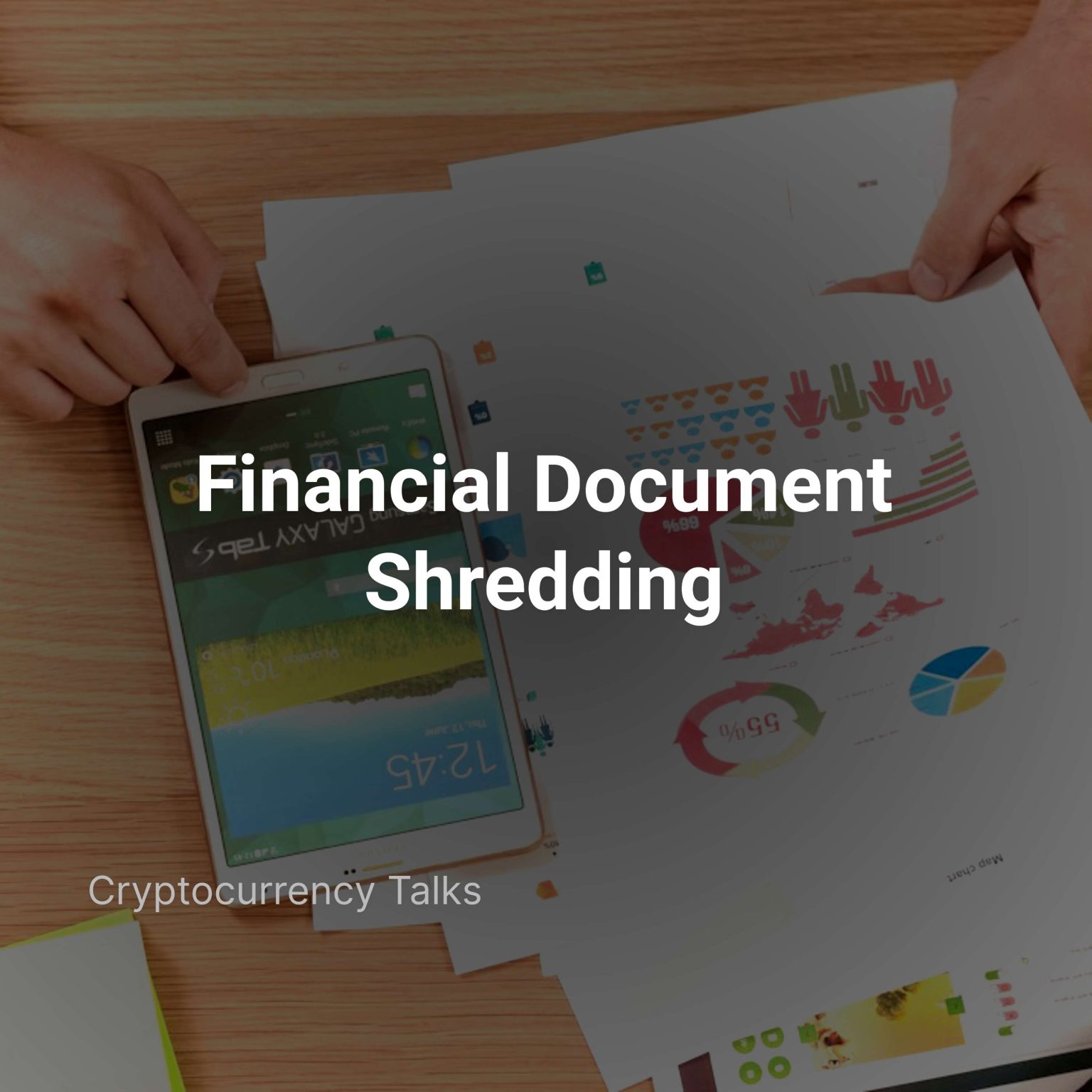Financial document shredding is a critical practice in today’s digital age, where the risk of identity theft and fraud looms large. Properly disposing of sensitive financial documents ensures that personal and confidential information remains secure, safeguarding individuals and businesses against potential threats. In this comprehensive guide, we will explore secure strategies for financial document shredding, empowering you to protect your sensitive information effectively. From understanding the risks of neglecting shredding practices to implementing proper techniques and schedules, we’ll cover everything you need to know to fortify your financial privacy.
Risks of Not Shredding Financial Documents
Neglecting financial document shredding can expose individuals and businesses to various risks, including identity theft, fraudulent activities, and even legal consequences. Without proper disposal methods, sensitive information contained in documents such as bank statements, tax forms, and credit card bills becomes vulnerable to exploitation by malicious actors. Identity theft, in particular, poses a significant threat, with criminals using stolen information to open fraudulent accounts or make unauthorized transactions. Moreover, failure to comply with privacy regulations can result in hefty fines and damage to an organization’s reputation. Therefore, prioritizing financial document shredding is essential for mitigating these risks and maintaining robust security measures.
Secure Strategies for Financial Document Shredding
When it comes to financial document shredding, employing secure strategies is paramount to ensure the effective protection of sensitive information.
Choosing the Right Shredder:
Invest in a high-quality shredder that meets your specific needs. Consider factors such as shredding capacity, shred type (cross-cut, micro-cut), and security level. Opt for a shredder with advanced features like jam prevention, automatic shut-off, and bin full indicators for efficient and reliable operation.
Types of Financial Documents to Shred:
Identify which types of financial documents contain sensitive information that requires shredding. Common examples include:
- Bank statements
- Credit card statements
- Tax forms
- Pay stubs
- Receipts
- Cancelled checks
- Expired credit cards and identification cards
Proper Shredding Techniques:
- Ensure that documents are properly prepared for shredding by removing staples, paper clips, and any other non-paper items.
- Feed documents into the shredder in manageable batches to prevent jams and ensure thorough shredding.
- Opt for cross-cut or micro-cut shredding for enhanced security, as these shred types produce smaller, confetti-like pieces that are more challenging to reconstruct.
Disposal Methods for Shredded Documents:
- Dispose of shredded documents responsibly to prevent unauthorized access to sensitive information.
- Consider recycling shredded paper to minimize environmental impact and ensure that shredded documents cannot be pieced back together.
- Alternatively, utilize professional shredding services that offer secure disposal options, such as on-site shredding or secure transportation to shredding facilities.
Maintaining Shredder Performance:
- Regularly maintain and clean your shredder to ensure optimal performance and longevity.
- Follow manufacturer guidelines for lubricating shredder blades and emptying shred bins to prevent malfunctions and maintain shredder efficiency.
- Schedule periodic inspections and maintenance checks to address any issues promptly and keep your shredder operating smoothly.
By following these secure strategies for financial document shredding, individuals and businesses can effectively protect their sensitive information and reduce the risk of data breaches and identity theft. Prioritizing proper shredding techniques and disposal methods ensures that confidential financial documents remain secure throughout their lifecycle.
Implementing Financial Document Shredding Practices
To effectively safeguard sensitive financial information, it’s crucial to implement financial document shredding practices systematically. Establishing a shredding schedule based on the volume of documents generated ensures consistent disposal and minimizes the accumulation of potentially vulnerable information. Moreover, training employees on proper shredding procedures and integrating shredding into overall security protocols fosters a culture of security within an organization. By making financial document shredding a routine aspect of daily operations, individuals and businesses can proactively mitigate the risk of data breaches and protect their financial assets.
Benefits of Financial Document Shredding
The benefits of financial document shredding extend far beyond mere data protection. By prioritizing shredding practices, individuals and businesses can effectively safeguard their financial privacy and enjoy peace of mind. Protection against identity theft is perhaps the most significant benefit, as shredding ensures that sensitive information remains inaccessible to unauthorized parties. Additionally, compliance with privacy regulations such as the General Data Protection Regulation (GDPR) and the Health Insurance Portability and Accountability Act (HIPAA) demonstrates a commitment to ethical business practices and builds trust with customers and stakeholders. Ultimately, the investment in financial document shredding pays dividends in enhanced security, legal compliance, and reputational integrity.
Let’s Wrap It Up
In conclusion, financial document shredding is a crucial component of modern security practices, offering essential protection against the risks of identity theft, fraud, and legal consequences. By implementing secure strategies for shredding, individuals and businesses can effectively safeguard their sensitive information and mitigate the potential impact of data breaches. From choosing the right shredder to establishing shredding schedules and training employees, prioritizing financial document shredding is essential for maintaining robust security measures. By making shredding a routine aspect of daily operations, individuals and businesses can fortify their financial privacy and enjoy greater peace of mind in an increasingly digital world.
